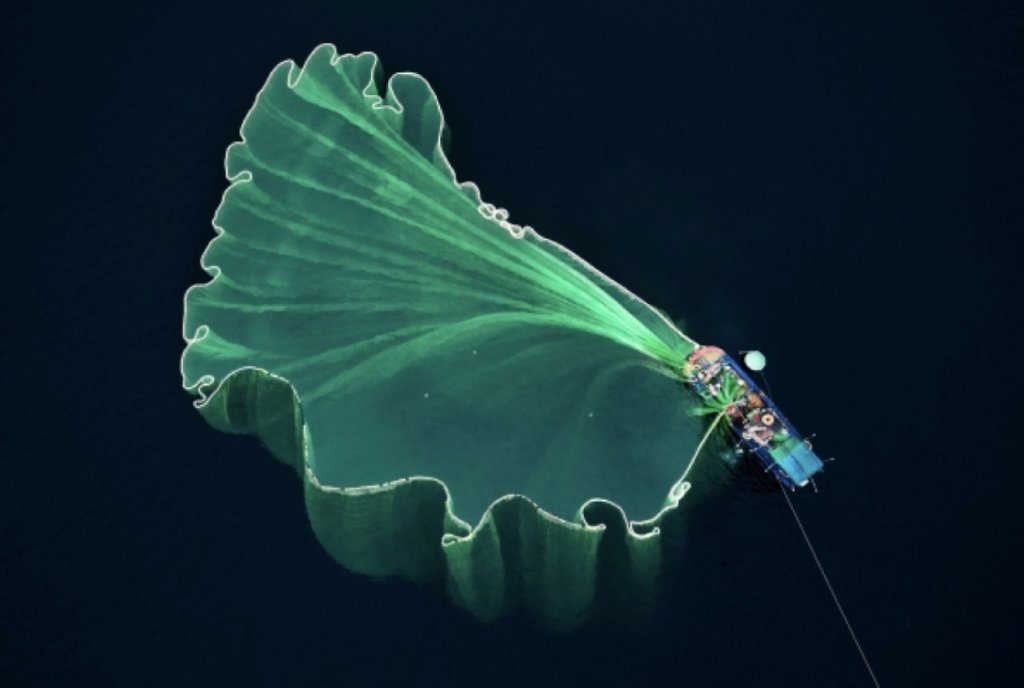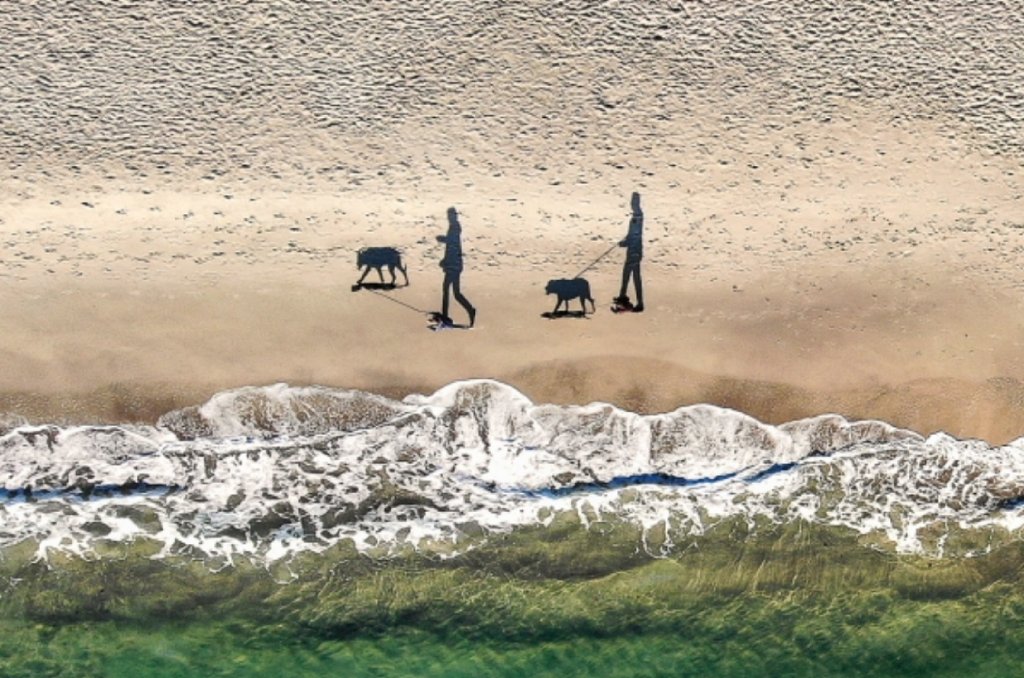If you are interested in drone photography, you are not alone. It is one of the hottest things to do right now in all of digital photography.
Questions naturally come up. What do I need to know about drone photography? Is it safe to fly a drone for photography? What can help me get the best out of drone photography?
In this introduction to drone photography, we will answer these questions and give you some drone photography tips.

Photo by Aaron Burden on Unsplash
Getting Started: Pick a Drone

photo by zsv3207 via iStock
You’ve done your research, you know what you want to do with drone photography gear. Now you choose your drone based on how its features and capabilities match up with those needs and wants. You also have decided how much to spend, so let’s assume you already have your new drone.

Perhaps you now have a drone capable of professional quality photography and videography like the DJI Mavic 2 Pro. This drone has forgiving flight characteristics with several shooting modes, great battery life of over 30 minutes, and excellent image and video quality.
It is equipped with a Hasselblad camera and lens incorporating a 1-inch type sensor of 20MP. The lens is equivalent to 28mm in full frame format, focuses as close as 1 meter, and has an aperture range from f/2.9 to f/11.0.
With a drone like this, you can create beautiful examples of photography and video. Its top speed is almost 50mph and you can control it from almost 5 miles away as well
Recommended Drone Photoghraphy Books:
Protect Your Drone

Your drone photography gear requires protection, and one of the better things you can get to achieve this end is a drone photography bag. I can’t tell you how many times I see an eager new drone photographer bring their drone to locations in the box it came in.
You have a bag for your DSLR or mirrorless camera and lenses. So, why keep your drone in a box that will wear out and is inconvenient to use?
One of the best bags I’ve found for drone photography is the Freelance™ Drone Edition tactical sling-pack from Hazard 4®.
Hazard 4® bags are designed for extreme use while offering excellent protection. Their bags and accessories are perfect for outdoor photographers and videographers. Being outdoors in nature or in urban settings exposes your valuable camera gear to hazards, so you want a protective bag that is also convenient to use.

The Freelance™ Drone Edition tactical sling-pack is specifically designed internally for drone use. The dividers are custom sized and it has multiple features to make life easier for active drone photographers.
This particular bag is designed to hold the DJI Mavic pro and other similar-sized folding drones.
When you get out into the field, the bag easily rotates from your back to your chest so you can quickly access your drone and other gear without taking the bag off.

The dividers inside the bag are movable so you can customize the carrying experience depending on the needs for each specific outing. There are three large pockets, one of which has an admin area, and another with a protective shell for items like batteries.
The strap has a molle covering with a locking buckle for security while the thermoformed back panels gives you comfort and dryness all day long.
In other words, this pack is purpose-built for long, rugged days outside with your drone!

Of course, sometimes you need a larger bag to accommodate more gear, and for that, I personally use the Hazard 4® PillboxTM.
As you can see in the photos above and below, this bag can accommodate a ton of gear - I have two drones, my camera with a lens attached, multiple batteries, and a drone remote with plenty of space to spare.

The large clamshell opening is just the start of the thoughtful design of this bag.
The ergonomics are superb and offer you a supremely comfortable carrying experience, even when the bag is loaded for bear, as mine was.
The 1000 D Cordura® fabric, YKK zippers, and patented hardware give this bag all the durability you need with a futuristic design that looks incredible.

The versatility of this bag is off the charts as well.
In addition to all the gear I had in the bag for my day trip out with my drones, I could have also brought along a laptop, a tablet, clothes, a first aid kid, food, water, and more!
The interior space is well organized to keep all that gear neat and tidy while the admin organizer keeps SD cards, pens, tools, and other small items organized.

I live in Southern California, so there can be some extremely hot days. This bag is ideal for hot weather drone photography because it has a molded back-pad and removable belt that are aerated to ventilate sweat.
What’s more, they’re both abrasion-resistant and the back-pad conforms to your spine so you can be out and about with your gear in complete comfort.

This bag is simply well thought out, beautifully designed, rugged as a tank, and is functional as the day is long.
If you’re serious about drone photography, investing in a camera bag like the Hazard 4® PillboxTM is a no-brainer!
Drone Photography is Photography First

Photo by Leonard von Bibra on Unsplash
A drone with a camera for still images or videos is an amazing tool and can be quite fun to use. Once you get past the inevitable initial thrill of flying over everything in sight, you settle down to making good pictures and videos with your drone
The same rules (guidelines, actually) of composition, exposure, and other techniques of excellent photography and videography also apply to images and video captured with a drone.
Use the rule of thirds to compose balanced shots. Shoot at golden hour to take advantage of the soft, warm light, as shown above. You know the drill!
If an image wouldn’t fly (excuse the pun...) when you tried taking it with your regular camera at ground level, taking it with a drone won’t magically fix whatever the issue was. Simply taking the shot or footage from an overhead perspective usually isn’t enough.

Photo by Dennis Ottink on Unsplash
Some of the best drone imagery and footage I’ve seen from drone masters isn’t obviously done with a drone. It’s because the photographer took the effort to make a pleasingly-composed, well-exposed, high-quality image.
The same applies with video.
Amazing primary or B-roll footage can be captured with a drone. Don’t limit yourself to only overhead views from your new drone. Drone footage captured at eye level or lower can be absolutely amazing. The drone allows you complete freedom of movement while filming to give your final product a polished look.
Stay Safe and Legal

Photo by Brennan Martinez on Unsplash
Drones have been in the news recently due to some operator’s poor choices. There are regulations involved for drone use and there are safety protocols as well. Drones like the DJI Mavic series can fly fast, high, and a long distance. Therefore, a responsible drone photographer will learn safety protocols and follow the law.
If you’re in the United States, take a look at FAA regulations regarding drone registration and flights before you launch your drone for the first time.
Enjoy Your New Drone

Photo by Lance Asper on Unsplash
Drones are awesome photo tools. And when it comes down to it, drone photography can open up your creativity and may even provide you with some extra income.
The keys to drone photography success are to keep all those photography rules in mind regarding composition, exposure, and so forth. Fly responsibly and safely. Carry your drone and other gear in a bag that actually protects it, too.
Do these things, and you’ll be able to have fun and shoot beautiful pictures and videos!
This blog post about "Introduction to Drone Photography" was first published on our website here https://www.photographytalk.com/introduction-to-drone-photography





























